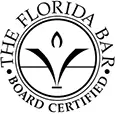How Much Does Workers’ Comp Pay for a Back Injury?
You may qualify for workers’ compensation if you suffered a back injury. But how much does workers’ comp pay for a back injury? The answer depends on various factors, and you need to understand how the workers’ compensation system works and the calculations it uses to determine your benefits.
Workers’ compensation is a no-fault insurance system most employers must offer their employees. The program provides certain medical benefits and lost wages to workers injured on the job, regardless of who caused the injury.
Although you likely have the right to receive workers’ compensation benefits, obtaining benefits is complex and challenging to navigate successfully. This is particularly true for back injuries due to a high occurrence of fraudulent claims. Thus, you should retain a Tampa workers’ compensation attorney to help you understand how much workers’ comp will pay for your back injury and to get assistance and advocacy throughout the claims process to improve your odds of getting the benefits you deserve.
Back Injuries Can Severely Debilitate You
Back injuries often affect the body’s musculoskeletal system, including the soft tissue, cartilage, nerves, joint disks, spine, and spinal cord. Common back injuries that occur in the workplace include:
- Spinal cord injuries
- Herniated disc
- Whiplash
- Muscular strains
They can lead to all sorts of impairments in a victim’s daily life, including the ability to work or even move about properly.
Furthermore, back injuries can lead to additional injuries because of the contorted manner in which a back injury may force one to walk or stand. Jobs that include manual labor tasks are the most frequent sites for workplace back injuries. Beyond that, they can affect employees in jobs across all industries. In one year, the Bureau of Labor Statistics documented 97,990 lost time injuries caused by back injuries due to overexertion from lifting and lowering actions alone.
A study of workplace injuries in Florida revealed that 8,119 back injuries occurred over a year, with the workers’ compensation insurers settling 2,057 of the claims. This process entails providing the injured employee with a one-time payment and concluding the case.
What Are Common Causes of Back Injuries in the Workplace?
Workplace back injuries are a common occupational health issue resulting from various causes. These injuries can be painful and debilitating, often leading to lost productivity and medical expenses. Common causes of back injuries in the workplace include:
- Heavy Lifting: Improper lifting techniques, such as lifting objects that are too heavy or using poor body mechanics, can strain the muscles and structures of the back.
- Repetitive Movements: Jobs that involve repetitive bending, twisting, or lifting, such as those in manufacturing or construction, can lead to cumulative trauma to the back over time.
- Poor Ergonomics: Inadequate ergonomic workstations, chairs, and equipment design can contribute to poor posture and back strain.
- Slips, Trips, and Falls: Workplace accidents, including slipping or tripping, can result in sudden twisting or jolting of the back, causing injuries.
- Overexertion: Excessive physical exertion, including pushing, pulling, or carrying heavy loads, can strain the back muscles and ligaments.
- Awkward Postures: Maintaining awkward or uncomfortable postures for extended periods can cause stress and strain on the back, such as sitting improperly at a desk or working in confined spaces.
- Vibration: Prolonged exposure to whole-body vibration, such as operating heavy machinery, can lead to back problems over time.
- Reaching and Stretching: Reaching for items on high shelves or stretching for objects unsafely can strain the back muscles.
- Falls from Heights: Jobs that involve working at heights, such as construction or roofing, can lead to falls that result in severe back injuries.
- Workplace Violence: Violence in the workplace can result in physical injuries, including back injuries, when employees are assaulted or attacked.
- Inadequate Rest Breaks: Not having sufficient rest breaks or failing to alternate between tasks can lead to fatigue, increasing the risk of back injuries.
Preventing workplace back injuries involves proper training, ergonomic design, and adherence to safety guidelines. Employers can implement safety programs and provide equipment that supports employee health and safety.
Employees should also take responsibility for their well-being by following safe work practices and using ergonomic equipment when available. If an injury does occur, prompt reporting and seeking medical attention are essential to ensure proper treatment and recovery.
How Much Compensation Will I Get for a Back Injury?
A worker’s compensation settlement differs from a personal injury claim. Most notably, workers’ compensation does not provide benefits for non-economic damages like pain and suffering or lost quality of life. However, virtually all worker’s comp programs offer injured workers medical and lost-wage benefits.
Medical Benefits
You may receive medical benefits from workers’ compensation at no cost as an injured worker. Benefits can even include mileage reimbursement to and from medical appointments from an approved medical provider and to and from the pharmacy and other covered treatment and therapy appointments.
In most cases, you must use an authorized medical provider for treatment. If you obtain medical care from an unauthorized physician, you may have to cover the costs of your medical bills and other associated expenses.
Lost Wages
Workers’ compensation will not compensate you for all your lost income. The amount you will get and how long you will receive benefits depend on the type of work-related injury or disability you suffered. Depending on the nature of your disability, you would receive up to 80% of your average weekly wages for as long as 104 weeks. The wages received are not taxable, so the amount of take-home pay should not decrease significantly.
Workers’ compensation insurance also offers vocational benefits in some states to help employees return to work.
Overall, the total compensation you could receive depends on the disability category you’re assigned to.
Categories of Workers’ Comp for a Back Injury
Disability categories in worker’s compensation claims fall into the following types:
- Temporary Total Disability (TTD) occurs when a worker is completely unable to perform their job duties for a limited time. This category applies to injuries or illnesses that are severe enough to prevent any work but from which the employee is expected to fully recover. During this period, the worker typically receives full disability benefits to replace their lost wages. The goal is to provide financial support until the employee can return to their regular job.
- Temporary Partial Disability (TPD) occurs when an injured worker can perform some job duties but not at full capacity. This might involve working reduced hours or taking on light-duty tasks that accommodate their temporary limitations. In this case, the employee receives partial benefits to compensate for the difference between their pre-injury wages and their reduced earnings during recovery. TPD allows for a gradual return to work while still providing some financial support.
- Permanent Total Disability (PTD) is the most severe category, indicating that a worker has a permanent disability and is completely unable to return to any type of gainful employment due to their work-related injury or illness. This condition is not expected to improve over time. Workers classified with PTD often receive lifetime benefits to compensate for their total loss of earning capacity. This category recognizes that the individual’s ability to work has been permanently and completely compromised.
- Permanent Partial Disability (PPD) applies when a worker has a permanent impairment that partially limits their ability to work but does not completely prevent them from working. The employee may have ongoing restrictions or limitations on the type of work they can perform or the hours they can work. Compensation for PPD is often based on a rating system that assesses the degree of impairment. This category acknowledges the long-term impact of the injury on the worker’s earning capacity while recognizing their ability to continue some form of employment.
When your doctor has determined you’ve reached Maximum Medical Improvement, it means your injury won’t get better with further treatment, or they have rated you with some degree of disability. The insurance company may require you to undergo an Independent Medical Exam (IME) to verify your back injury impairment rating.
Insurance companies generally pay a one-time payment for full- or partial-, long-term disabilities. The average back injury settlement is calculated from an employee’s weekly wage, the medically determined severity of the disability, and the state’s compensation rate for various body parts and functions.
For example, suppose the examiner rates your impairment level at 50 percent, and your weekly wage is $1,000, and in your state, the maximum payout is 500 weeks of earnings for 100 percent impairment. In that case, you’d be entitled to 250 weeks of $1,000 a week pay for having half the impairment fully recognized in that state.
So, what you’re looking at from worker’s compensation for a back injury is:
- Coverage of your medical treatments and rehabilitative expenses
- A cash settlement based on your foregone earnings due to the injury is calculated proportionally based on how severe your back injury is.
How Can I Recover Workers’ Comp Benefits?
Recovering workers’ compensation benefits typically involves a specific process that varies depending on the jurisdiction and the circumstances of your workplace injury. However, here are some general steps you can take to initiate the process and increase your chances of successfully obtaining workers’ comp benefits:
- Report the Injury: Report your workplace injury to your employer immediately. The sooner you report it, the better, as there are often strict deadlines for notifying employers.
- Follow your company’s procedures: Your employer may have specific procedures for reporting workplace injuries. Follow these procedures to ensure that your claim is properly documented.
- Seek Medical Treatment: If your injury is severe, seek immediate medical attention. Your health and well-being should be the top priority. Inform the healthcare provider that your injury is work-related. This documentation is essential for your workers’ compensation claim.
- File a Workers’ Comp Back Injury Claim: You will typically need to complete a workers’ compensation claim form provided by your employer or the workers’ compensation insurance carrier. As you complete the form, provide accurate and detailed information about the injury, including the date, time, location, and how it occurred.
- Consult with an Attorney: Workers’ comp benefits are not guaranteed, and many claims are denied, particularly back injury claims. Consulting with an experienced workers’ compensation attorney can be beneficial, especially if your claim is contested or denied. An attorney can help you understand your rights, navigate the legal process, and advocate.
- Cooperate with the Insurance Company: The workers’ compensation insurance carrier will investigate your claim. Provide them with any requested information and documents. Attend any required medical evaluations or independent medical examinations (IMEs).
- Receive a Benefits Decision: The insurance company will evaluate your claim and determine eligibility for your workers’ compensation benefits. If your claim is approved, you will receive benefits for medical expenses, lost wages, and any applicable vocational rehabilitation services.
- Appeal a Denial (if necessary): If your claim is denied, you have the right to appeal. This often involves a formal hearing or dispute resolution process. Consult an attorney if the insurance company denies your claim to get help with the appeals process.
- Maintain Documentation: Keep copies of all relevant documents, including medical records, correspondence with your employer and the insurance company, and any receipts for expenses related to your injury.
- Comply with Medical Treatment: Follow your doctor’s orders and attend all necessary medical appointments to demonstrate that you are actively trying to recover.
- Stay Informed: Understand your workers’ compensation rights and responsibilities. Familiarize yourself with the specific laws and regulations in your jurisdiction.
Remember that the insurance company can be hesitant to cover back injuries due to their frequency and potential to be exaggerated or fabricated. When only muscles and ligaments are impacted, the extent of the injury is determined by the patient’s description. It is often difficult to diagnose back injuries, which can make it harder for people who have been hurt to prove their injury happened, thus reducing their chances of getting legal aid.
Insurance companies can sometimes dispute the seriousness of a back injury due to its subjective nature. This leads to questions about the benefits they should grant for the injury. This suspicion is unfair to victims, but it is simply the nature of the insurance companies’ business.
The workers’ compensation process can be complex, and following the procedures and requirements specific to your location is important. Consulting with an experienced workers’ comp attorney can be particularly helpful, as they can provide guidance, protect your rights, and advocate on your behalf to maximize your chances of a successful claim.
FAQ
Q: Why do states calculate the money given out by workers’ compensation based on lost wages?
A: Because it is the easiest way and least expensive for them to cover your injuries and foreseeable lost wages without having to compensate you for pain and suffering and other intangible harms left by your injury.
Q: Why do insurance companies investigate the severity of your back injury so closely?
A: Because there is a high prevalence of fraud and feigned injuries when it comes to back injuries, insurance companies want to make sure they pay to settle a valid claim.
Q: How do insurance companies determine how to classify your injury?
A: They look at reports from doctors and the circumstances your injury has put you in physically, then determine the severity of your injury from this information.
Q: Why can’t I sue my employer instead of accepting worker’s compensation?
A: Workers’ compensation protects employers from lawsuits while ensuring injured workers get benefits. As a result, workers’ compensation laws prohibit lawsuits by injured employees against their employers in most circumstances.
Contact an Experienced Tampa Workers Compensation Lawyer
If you suffer work-related back injuries, you should not hesitate to contact an experienced team of workers comp injury lawyers for a free consultation. The skilled attorneys at Boohoff Law can advise you on your legal rights regarding your workers’ compensation settlement amount and, if necessary, appeal on your behalf.
Free Consultation
We Are Here For You 24/7
Reviews
– Elissa M.
“Really pleased with Boohoff Law! Received immediate responses when I had any questions. Treated amazingly by all staff … made this process a true breeze!”
– Caitlyn M.
– Brandy K.
Related Posts
Sidelined by a Sudden Door? Figuring Out Who Is Liable in a Dooring Bicycle Accident
After the Impact: Who Can Be Sued in a Commercial Truck Accident Case?
What if My Child Was Injured on a School Bus? How To Protect Their Rights and Future
Recovery is personal.
We’re here for you.
We’re close by. And if you can’t make it to us, we’ll meet you where you need us, at home or in the hospital.
You're better off with Boohoff.











The information on this website is for general information purposes only. Nothing on this site should be taken as legal advice for any individual case or situation. This information is not intended to create, and receipt or viewing does not constitute, an attorney-client relationship.
available 24/7
(877) 999-9999
